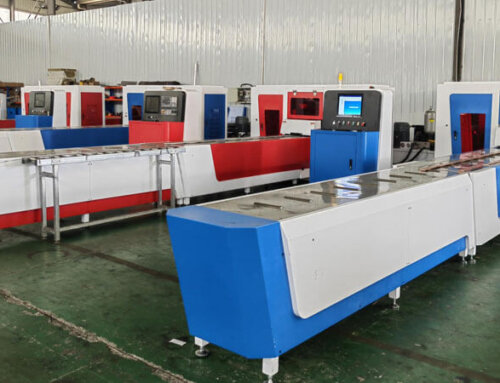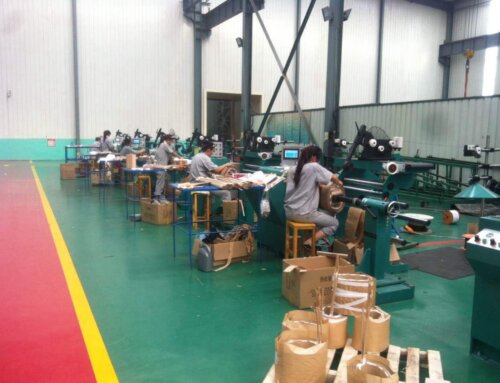transformers are essential equipment in the power system. Its main function is to convert voltage, maintain the balance between electric energy and transmission, and provide a high-quality power supply.
The transformer often has problems during operation, and some serious problems will paralyze the power system, therefore, When the transformer is found to be wrong, it should be repaired in time to avoid more serious failures. The dry-type transformer is analyzed and discussed its easy to appear faults, and the solutions to the faults found are explored, and effective countermeasures are obtained.
Introduction
Dry-type transformers are mainly used in the lighting equipment of super high-rise buildings or airports. It is one of the new technologies independently developed by our country after drawing on foreign dry-type transformer technology. Dry-type transformers refer to transformers in which the core and windings are not immersed in insulating oil. Because dry-type transformers do not have oil, there are no fire, explosion, pollution and other problems. Therefore, the use of dry-type transformers in society is more and more common. About 50% of the power equipment in our country use dry-type transformers. However, although dry-type transformers are high-tech equipment, they still have some defects and are prone to various errors and failures.
1.Abnormal noise
(1) Cause of failure
1.If a single-phase ground fault or electromagnetic resonance occurs in the power grid, the voltage will increase significantly, leading to overexcitation of the transformer. At this time, the noise will increase, and it will be very sharp at the same time, which will have a great impact on the transformer.
2.Other parts resonate and cause noise. This noise is not transformer noise.
3.The installation of the transformer base is not in place, causing the vibration of the transformer to increase significantly, and the noise is amplified.
(2) Troubleshooting
1.Use a multimeter to measure the actual voltage on the low-voltage output side, and on the basis of ensuring that the low-voltage power supply meets the requirements, select a suitable high-voltage side tap to properly lower the power supply to eliminate overexcitation and noise.
2.Tighten the loose shell aluminum plate to complete the fixing operation of the shell plate, and at the same time, correct the deformed part. Check whether the fan is loose during the application period, and tighten the fixing bolts on the fan; set a rubber between the fan and its bracket, through its application, can effectively control the occurrence of vibration of the fan during operation. Deformation causes friction with the fan impeller during operation, and the outer cover must be reshaped.
3.Appropriate modifications to the original transformer installation method, such as supporting a shock-proof pad under the trolley, to effectively stop the wheels, so as to avoid some noise.
- Tripping
(1) Power transmission trip
In the high-voltage secondary cabinet, the setting value of the current protection device is relatively small. Since the transformer is closed in the no-load state, the magnetizing inrush current generated in a short time can reach several times or even dozens of times the rated current. If the setting value is relatively small, it should be re-adjusted according to the relevant regulations of relay protection.
- Protection action trip
When the transformer in operation has this fault, it cannot be put into operation until the cause of the fault is found out. Instead, check from the following points: check whether the appearance of the transformer is abnormal, whether there is a problem with each device, whether the probe is damaged, etc.; if the outer cover door lock device is not closed or the contact is poor, check the actual contact of the contacts , And make timely rectification based on the inspection results; check the actual action records of the integrated protection device to determine whether the DC and protection are in a normal state. Check the switch control cabinet and power supply to confirm whether there is a fault, and do an electrical test at the same time.
- Abnormal grounding insulation of transformer core
- External factors
When the transformer is in operation, the magnetic flux leakage of the iron core makes the nearby space produce weak magnetic properties, attracting metal powder and dust around, especially if the flow of people is too large, the crowd is easy to cause air turbidity, if the maintenance and cleaning work is not in place, the iron core will be grounded happened.
- Internal factors
There are many factors that cause transformer problems. The specific analysis is as follows:1. There is a problem with the material of the transformer. Silicon steel sheet is the main material of the transformer. If a large area of rust appears on the surface of the silicon steel sheet, it will have a greater impact on the normal operation of the transformer and easily cause a short circuit between the sheets.2. Unreasonable processing of silicon steel sheets can also lead to transformer problems, such as excessive burrs during the processing of silicon steel sheets, which will also cause short circuits between transformer sheets.
- Multi-point grounding treatment measures
- Deal with multi-point ground faults affected by external factors according to the condition of the transformer on site. Dry-type transformers will accumulate dust, moisture, etc. due to long-term shutdown or poor sealing. The air will be dirty and the surface of the transformer will be dusty. Therefore, the surface can be cleaned first. Use sun lamps to bake the iron yoke, or use the no-load method for self-heating.
- Use step-by-step troubleshooting method to deal with core grounding faults caused by internal factors. The step-by-step troubleshooting method is a common method for checking faults in power systems. It can also be effectively applied in power systems. DC and AC methods are used to multi-point ground faults in transformer cores. Point to search, starting from the upper iron yoke, step by step, from detecting the through-core screw to detecting the core-to-ground insulation resistance. If no abnormality is detected during the period, it means that the fault is not at the through-core screw and core-to-ground insulation resistance. . Then check the lower iron yoke. It is more difficult to check the lower iron yoke. The lower iron yoke of the dry-type transformer supports coils, which is difficult to remove. It can be overhauled by means of AC arc method.
4.Suggestions in the operation and maintenance of dry-type transformers
(1) Regular maintenance
In order to ensure the normal operation of the transformer, the transformer needs to be inspected and maintained regularly. The inspection cycle can be determined according to the on-site environment. Generally, the inspection should be carried out once a year or longer in a dry and clean place. In places with dust or turbid air, every three Check once every six months.
(2)Regular inspection of fasteners (recommended once a year)
Check whether all the electrical connection fasteners on the transformer are loose, and re-tighten them; 2. Check whether all metal parts of the transformer are rusty or corroded, and take corresponding measures if necessary; 3. Check that the insulation surface has There is no carbonation and creepage phenomenon, if necessary, take corresponding measures to deal with it.
5.Summary
Dry-type transformers are currently in an era with both challenges and opportunities. The challenge comes from the competition between products. Due to the development of technology, more and more types of transformers are constantly developing and improving their functions. Dry-type transformers face great competition in this environment. Faced with this situation, dry-type transformers should try to solve their own problems as much as possible, and allow the use of dry-type transformers to further expand.







Leave A Comment